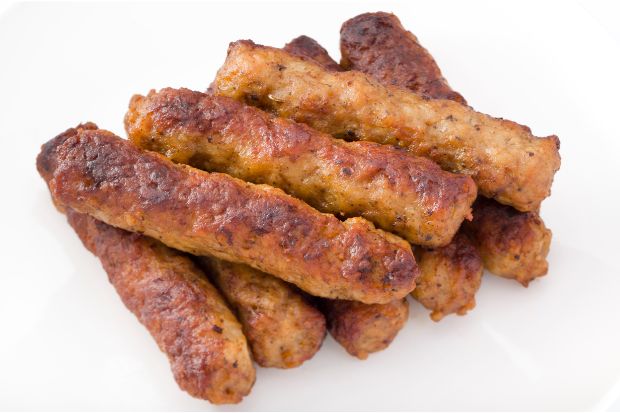A lot goes into the making of a good sausage and it all comes down to using a good sausage casing. Using the right casings gives homemade sausage the correct bite and ensures that the sausage cooks evenly and completely. Today, we will discuss two options for sausage casings: traditional natural casings and artificial collagen casings.
Both products are made from animal parts and both work extremely well for sausages that will be cooked or smoked after stuffing. So before you mix up a batch of ground meat for bratwurst or breakfast sausage, consider your options for casings.
At the most basic level, a sausage casing has one job. It must contain ground meat, seasonings, and spices while the sausage is handled, cooked, and stored. There is an art to sausage making that requires patience and practice. The meat must be pushed into the casings without air bubbles or tearing the casing. One of the reasons that artificial casings have become popular is that they are often easier to use than natural casings. However, not all casings are the same, and you will need to use different types of casings for different types of sausage.
If you do not have access to natural or artificial casings, or just don’t want to use them but still want to make sausage links, you can make casings from strips of muslin. To form casings about 1 1/2 inches in diameter, cut strips about 6 inches wide and 16 inches long.

Drawbacks of Using Natural Casings
Some people are squeamish about eating intestines. We get it – sometimes things sound so unappealing that they will never taste good.
Natural casings have an irregular shape that can make stuffing the sausage more difficult. Certain types, like sheep intestine, can be very delicate and difficult to stuff without blowouts and air pockets. The natural shape often means that your sausage will look lumpy rather than smooth.
Natural casings must be stored and handled appropriately. They require rinsing before use to remove excess salt and can only be stored in very salty water.
Choosing the Right Sausage Casings
Making sausage is a skill that developed so far back in time that the origins are lost to knowledge. What we do know is that the process of making sausage developed as a way to preserve meat long before anyone ever thought of refrigeration. Our ancient ancestors learned that by coarsely grinding meat and fat, then stuffing the mixture into tubes and smoking it, they could create a meat product that offered all of the health and nutrition benefits of fresh meat in a portable, shelf-stable package.
How to Stuff & Link your sausage – Reduce Casing Blowouts
FAQ
What is a good substitute for sausage casing?
What can I use for sausage casing?
Can sausages be made without casing?
Can I buy sausage without casing?
